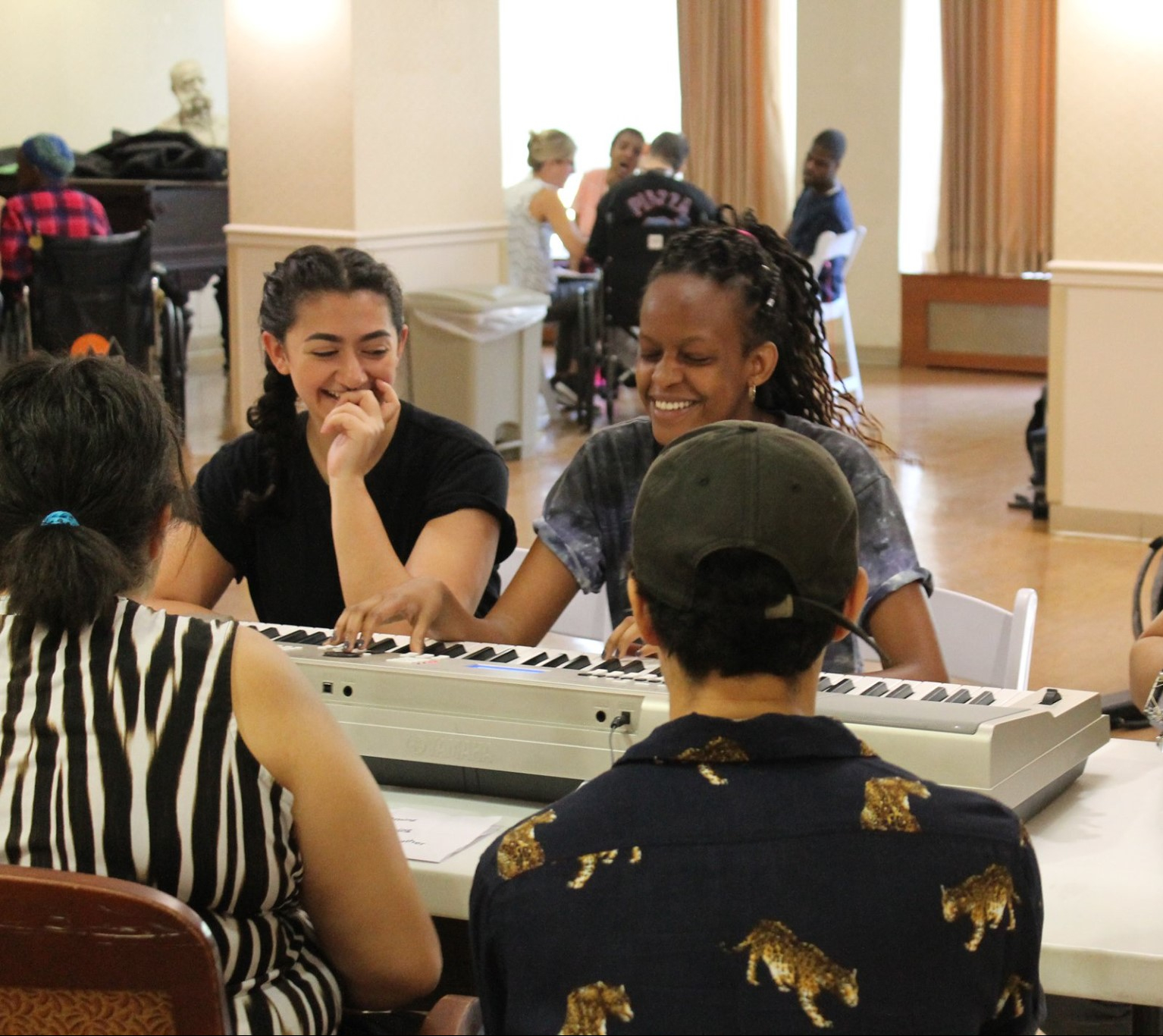Erica Cao // “Life Unclassed” has a simple backdrop—metronomic beats mark the grind of army life. The song has its own backstory: a joint creation by a 17-year-old high schooler from St. Louis with a 71-year-old veteran at the Bronx Veteran Affairs hospital in NYC.
This probably isn’t the kind of music you’re used to. When we think of music today, it is easy to imagine a concert hall—e.g., Lincoln Center with its majestic auditoriums and lobbies with chandeliers. The musicians are experts on stage as the audience listens. This kind of music is predominantly recognized for its aesthetic and cultural values. But there are other kinds of music more typically recognized for their social values, including music therapy and music education, and, as in “Life Unclassed,” collaborative songwriting.
It’s a good time to remind ourselves of those social values. These days, it has become increasingly difficult to interact with people from different backgrounds than ourselves. Some point to the fraying of the social fabric, others to the epidemic of loneliness, and others to the crises of democracy and economic inequality. In the face of such issues, oftentimes music and the arts are dismissed as inconsequential entertainment. But for concerns about societal healing, treating music in such a way isn’t just dismissive, it’s damaging.
We often think of music as an aesthetic commodity. But the ways we make music are about the ways we relate. Our music-making is, at its heart, about human connection: non-exclusive, participatory, and jointly imaginative.
Take the kind of relation between the veteran and the student, who came together through Humans in Harmony, a NY-based music nonprofit I co-direct. By re-imagining stories into song, students in our chapters and community members in our workshops connect across diverse backgrounds and experiences. In doing so, they and we, the listeners, find the congruences and differentiations that allow us to enter another’s life story and our own. We may, such as in the chorus of “Life Unclassed,” find the personal merging with the collective, like that of a nation:
And now I’m sitting in New York
Looking back in the past
I’ve fought for my life
And I know I will last
I’ve fought for this freedom
To live life unclassed
For citizens, Americans
For kindness to last
Relations are at the core of “participatory music”—music that anyone, regardless of musical skill, can join in with. A participatory form of socio-functional music centers around the making. It is about the processes, such as reciprocal ways of relating that music, with its multi-sensory engagement, temporal synchrony, and floating intentionality, allow. It is about making, doing, and being—ways of thinking that get away from human artifact, and take us to places that blur the distinctions between everyday behavior and performance.
Certainly, participatory music is not mutually exclusive with “presentational” music like the kind typically found in concert halls. The two are especially dynamic when they go hand in hand. In David Lang’s “the public domain,” 1000 voices—including voices of the public and “audience”—convened in Lincoln Center’s outdoor plaza. Singing, walking, and waving arms about, they all entered the realm where music becomes music-making.
Such mutual acts of creation are examples of transformative processes: processes which alter the sense of belonging and self of everyone involved through the destabilization of group boundaries. Our creations, including the stories we tell, do not simply represent realities. As cognitive psychologist Jerome Bruner describes, they create realities, “constructing and representing the rich and messy domain of human interaction.”
If this all sounds radical, it’s actually, like much that is radical, a tradition rediscovered. Ethnomusicologists speculate that even before humans developed language, we bonded through claps, vocalizations, and rhythm. Through mimicry, we become affiliated with one another. In shared social contexts such as ritual, music allows individuals to preserve their own interpretations while in synchrony with a collective community. Participatory music-making is a way people have always made music: as a relational medium with others.
Our music-making and our narratives pose possibilities for humans not only to describe our experiences, but to construct our realities together. How we conceive of persons and how we relate to others have implications for our quality of care and democracy. Whether for health care and well-being, or for music and the arts, to value relations of reciprocity opens up possibilities to “live life unclassed.”

